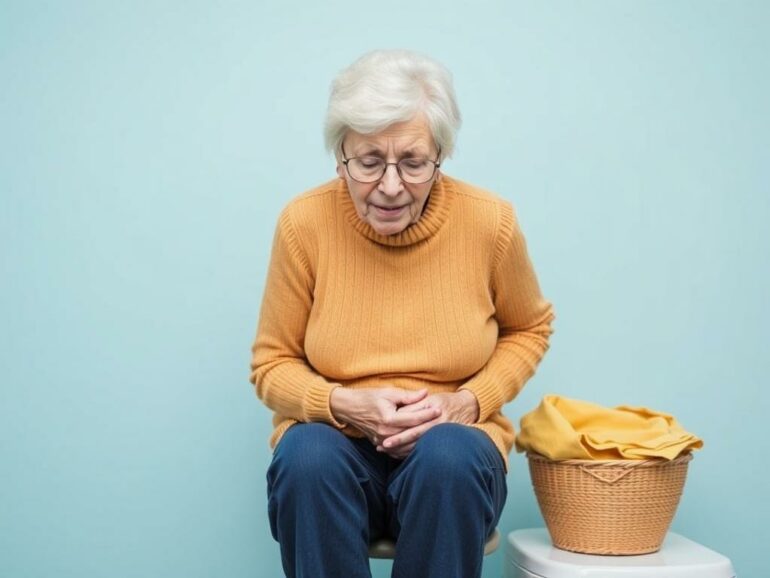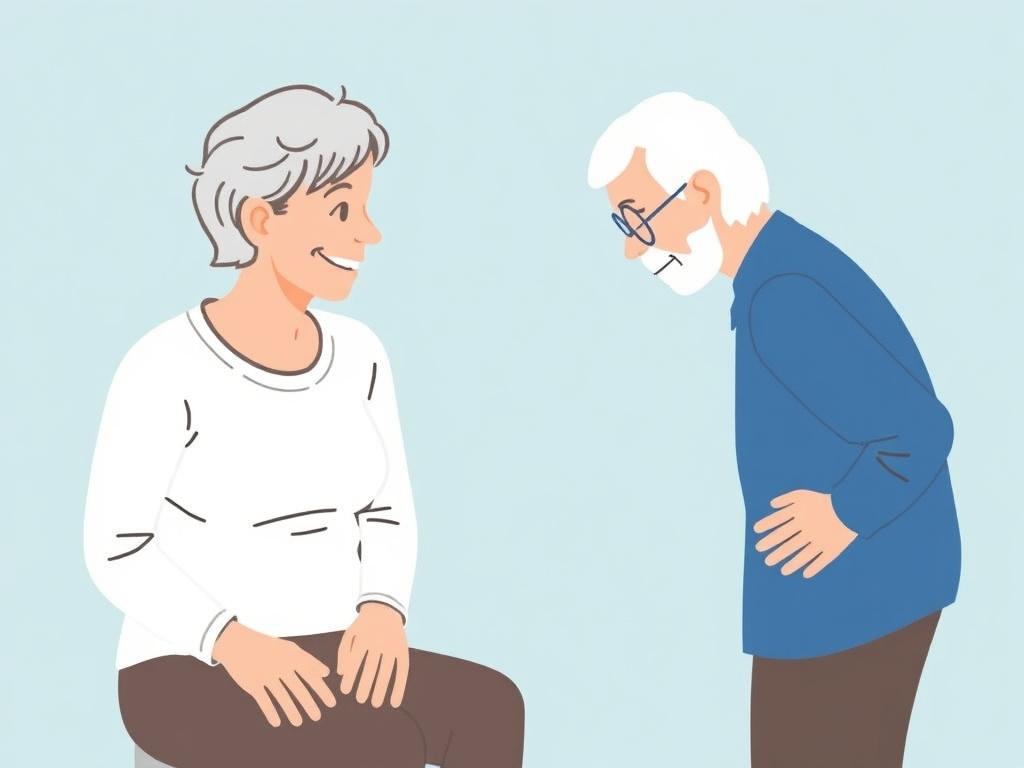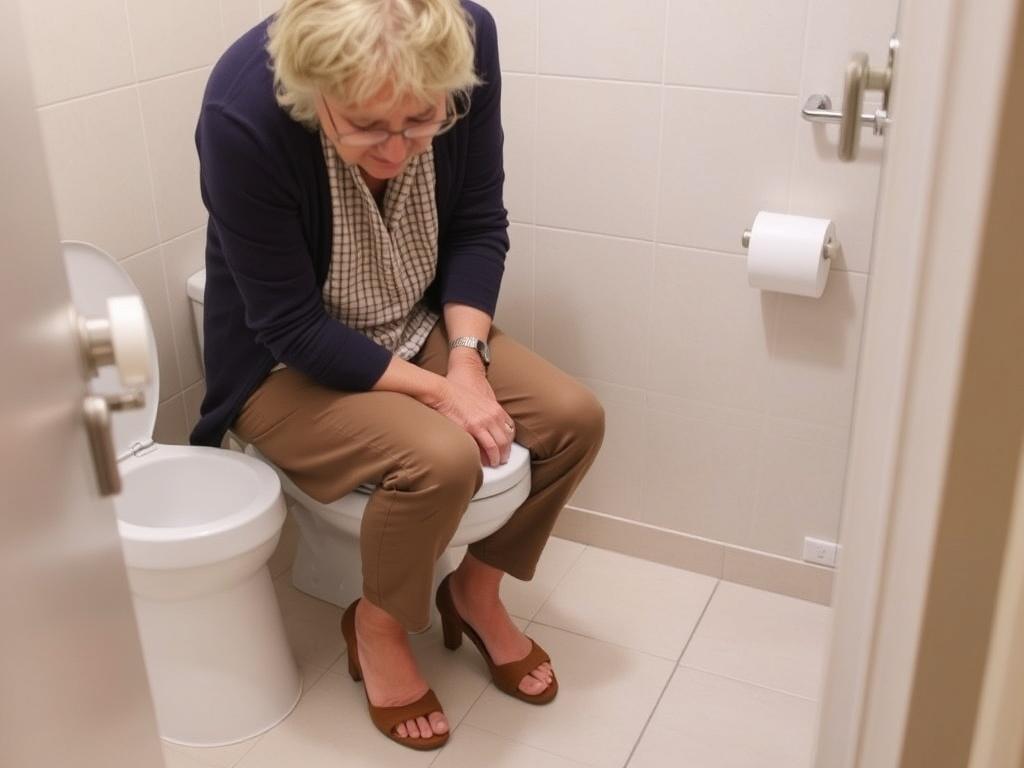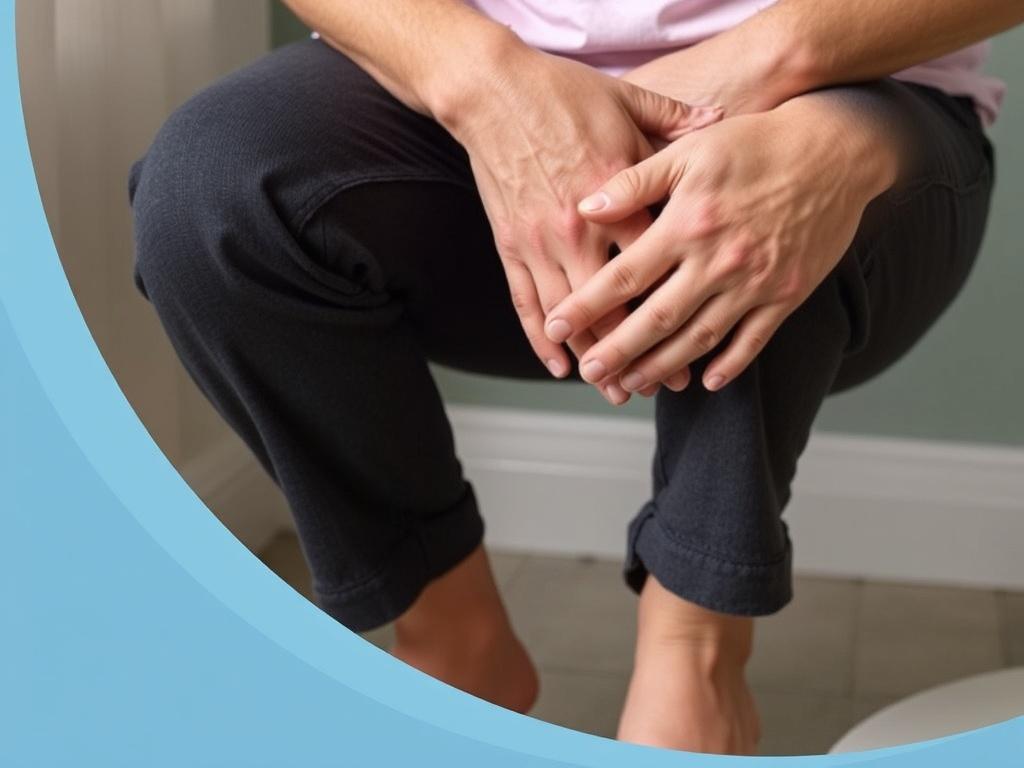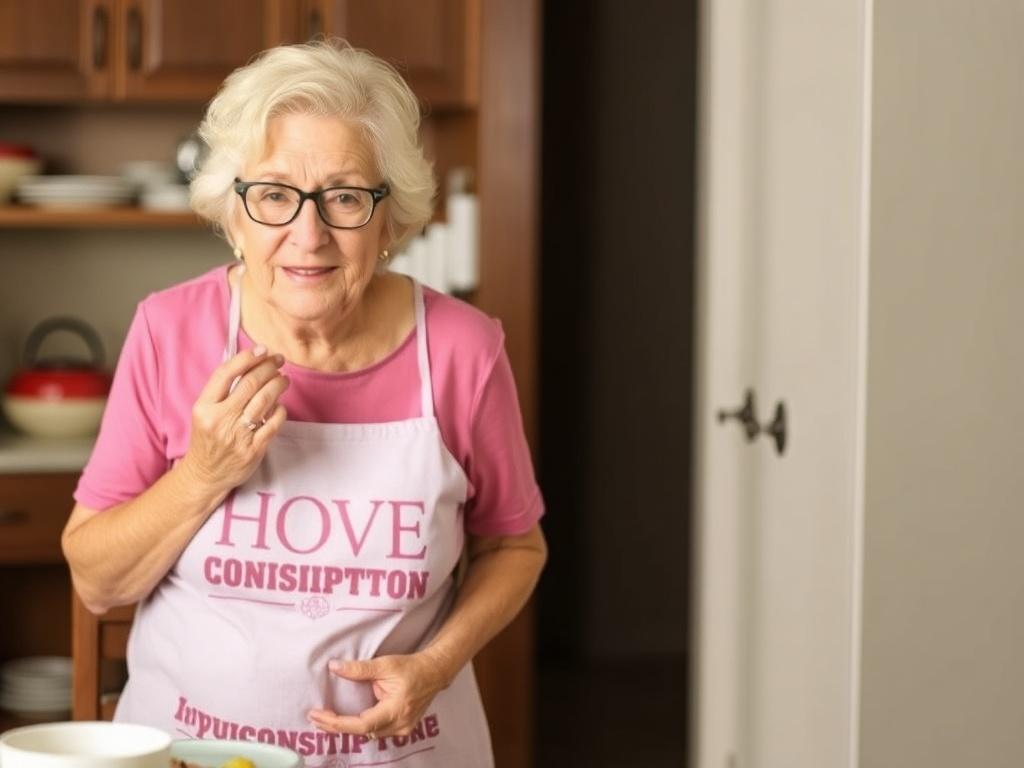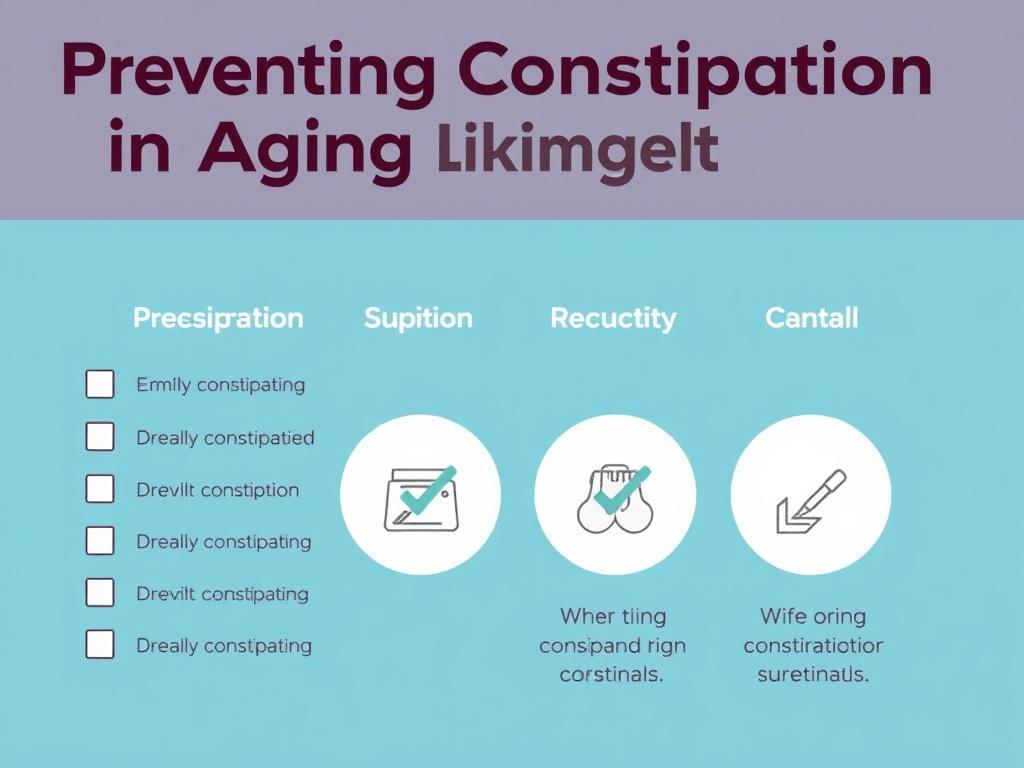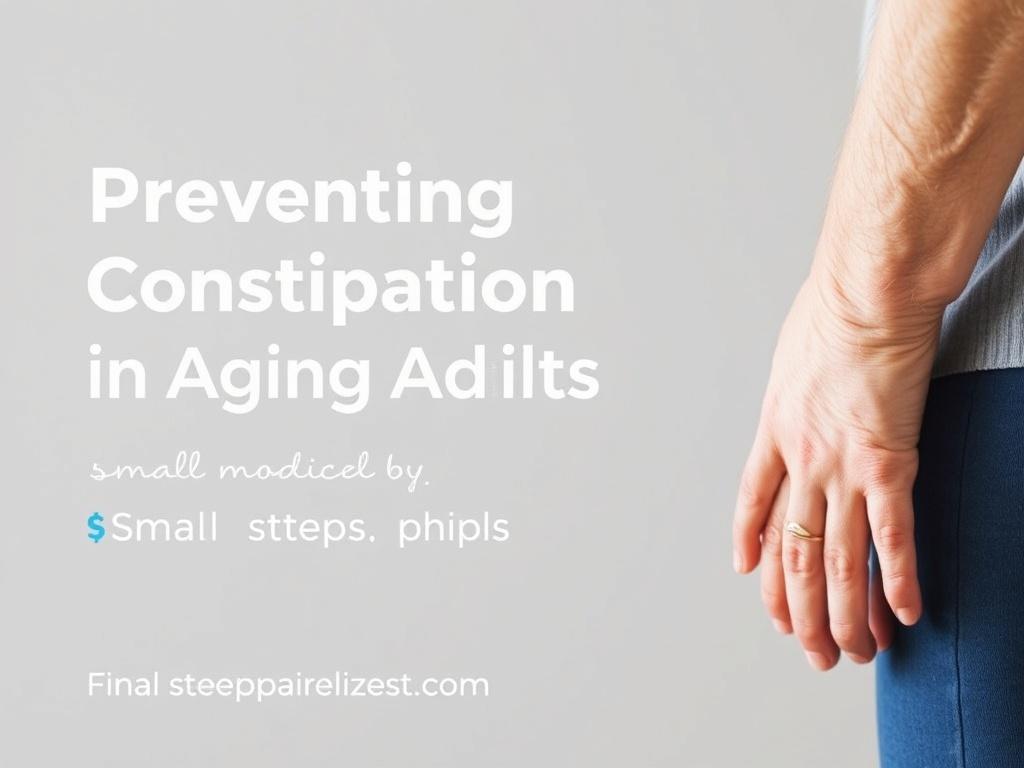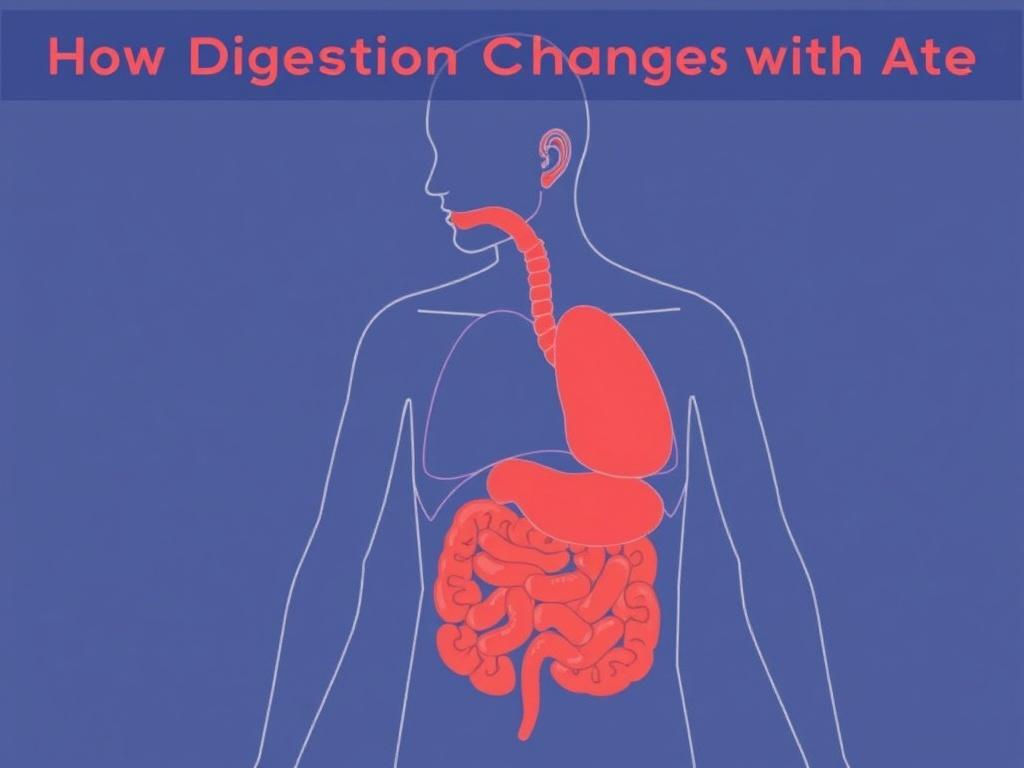Aging is a journey full of changes, and for many older adults one of the most persistent and uncomfortable changes is constipation. It sneaks in slowly for some people, comes on suddenly for others, and affects not just digestion but mood, mobility, and independence. This article is written for older adults, family members, and caregivers who want clear, practical ways to prevent constipation and improve day-to-day comfort. We’ll walk through why constipation becomes more common with age, how to recognize it, and—most importantly—how to prevent it using diet, movement, routines, and simple environmental tweaks. The goal is to offer reliable, evidence-informed strategies you can apply today.
Constipation is more than a nuisance. It can cause pain, bloating, fatigue, poor appetite, and can become a serious health concern if untreated. But the good news is that many causes of constipation in aging adults are preventable or modifiable. This article will give you straightforward, usable steps: what to eat and drink, how to design a daily routine that supports healthy bowels, which medicines to review with a clinician, and when to call a doctor. We’ll also offer helpful tips for caregivers who assist with toileting or meal planning. Read on for an in-depth, warm, and practical look at preventing constipation in aging adults.
Why Constipation Becomes More Common with Age
It helps to start with a simple explanation. Constipation typically means fewer bowel movements than usual, hard or dry stool that’s difficult to pass, or a feeling of incomplete evacuation. As we age, several physiological and lifestyle factors conspire to make constipation more likely. First, intestinal motility—the movement of the gut that pushes stool along—tends to slow. Muscles in the colon can become less responsive, and nerve signaling that coordinates movement can change.
Second, older adults often take more medications than younger people. Many common drugs, including some painkillers, antidepressants, antihistamines, certain blood pressure medicines, and iron supplements, list constipation as a side effect. When multiple medications are taken together, the effect can be pronounced.
Third, chronic health conditions that increase with age—such as diabetes, Parkinson’s disease, stroke, and hypothyroidism—can affect the nervous system or gut function. Reduced mobility due to arthritis or chronic pain also reduces the mechanical stimulation of the intestines that comes from regular movement.
Lastly, changes in appetite, dentition (teeth), taste, and social circumstances (eating alone, reduced grocery trips) can lead to diets low in fiber or fluids. Dehydration, decreased fiber intake, and decreased physical activity are classic contributors to constipation in older adults.
Physiological changes that matter
Aging affects the structure and function of the gut. Muscle tone in the pelvic floor and rectum can decline, and sensory perception may lessen—meaning some people don’t feel the urge to go when stool is present, so they delay until it becomes harder to pass. Hormonal changes and reduced metabolic rate can also play small roles. Understanding that these changes are common helps normalize the problem and encourages proactive measures.
Medication-related constipation
Medications are a major reversible factor. Opioids are notorious for causing constipation, but so are many other drugs. It’s worth regularly reviewing all medicines with a clinician or pharmacist to identify contributors you can change. Often, a safer alternative, a dose adjustment, or adding preventive measures is possible.
Recognizing Symptoms and When to Seek Help
Constipation means different things to different people. For some, it’s no more than a reduction in frequency from daily bowel movements to every other day. For others, it’s passing small, hard pellets or feeling painful straining and incomplete evacuation. Common symptoms include:
- Infrequent bowel movements (commonly defined as fewer than three per week).
- Hard, lumpy, or dry stool (often described as rabbit pellets).
- Straining during bowel movements.
- Feeling of blockage in the rectum or incomplete evacuation.
- Bloating, abdominal discomfort, and less appetite.
Most constipation can be managed at home with lifestyle changes, but some signs should prompt a medical evaluation without delay:
- Sudden or severe abdominal pain.
- Blood in the stool or black, tarry stools.
- Unexplained weight loss or persistent vomiting.
- New-onset constipation after age 50 without an obvious cause.
- Constipation with fever or signs of infection.
- When a person is very frail, confused, or has a rapid decline in function associated with constipation.
These symptoms may indicate obstruction, gastrointestinal bleeding, infection, or a more serious disease like colorectal cancer. Timely medical attention is essential.
Dietary Strategies: The Foundation of Prevention
Diet is one of the single most powerful tools to prevent constipation. Simple adjustments to fiber intake, fluid habits, and meal patterns can make a big difference. The goal is to create stool that is soft, formed, and easy to move along.
Fiber: Soluble vs. Insoluble and how to build it in naturally
Fiber comes in two types: soluble and insoluble. Soluble fiber attracts water and forms a gel-like substance which can help soften stool. Good sources include oats, legumes, apples, and citrus fruits. Insoluble fiber adds bulk and helps move stool through the colon; it’s found in whole grains, nuts, seeds, and the skins of vegetables and fruits.
Older adults often do better when they increase fiber gradually, over weeks, to avoid gas and bloating. Aim for a total fiber intake of 25–30 grams per day, spread across meals. Because many older adults have reduced appetite or chewing difficulties, focus on fiber-rich foods that are easy to prepare and digest—mashed beans or lentil soups, cooked vegetables, soft fruits (peeled if necessary), and ground flaxseed mixed into yogurt.
Hydration: The often forgotten partner
Fiber needs water to do its job. Without enough fluid, dietary fiber can make stool harder. Encourage a steady intake of fluids across the day rather than a large amount at once. Plain water is excellent, but soups, milk, and herbal teas also count toward daily fluid needs. Some older adults limit fluids because of incontinence concerns—if that’s true, address the incontinence with a clinician so hydration can improve.
Meal timing and regularity
Eating stimulates the gut through the gastrocolic reflex. For many people, the first bowel movement of the day occurs after breakfast. Establishing a routine—meals at consistent times and trying to sit on the toilet for a few minutes after meals—can harness this natural reflex. For people with dementia or mobility limitations, a caregiver can create cues and support the routine.
Foods to emphasize and foods to moderate
Include these fiber-rich, easy-to-eat options:
| Food Group | Examples | Serving Ideas |
|---|---|---|
| Whole grains | Oats, barley, brown rice, whole-grain bread | Warm oatmeal with fruit; whole-grain toast |
| Fruits | Prunes, apples, pears, berries | Stewed prunes; fresh fruit with yogurt |
| Vegetables | Carrots, squash, leafy greens, peas | Steamed vegetables; blended soups |
| Legumes & seeds | Beans, lentils, chia, flaxseed | Pureed bean soups; ground flax in smoothies |
| Fluids | Water, herbal tea, broth | Sip regularly between meals |
Moderate high-fat, low-fiber foods (like processed foods and excessive cheese), and be cautious with large amounts of caffeinated drinks if they cause dehydration in the individual.
Daily Routines and Toileting Habits
Prevention is largely about habit. Small changes in routine can produce steady improvements.
Establish a bowel-friendly morning routine
Many people find that sitting on the toilet for 10–15 minutes after breakfast helps. This uses the gastrocolic reflex to encourage a bowel movement. Encourage a calm setting—avoid rushing—and provide privacy. If someone has mobility issues, make sure they have the help or aids they need to get to the bathroom safely.
Body position matters: the squat angle
Modern toilets put us at a 90-degree angle, which can make emptying the rectum harder. Using a small footstool to raise the feet and mimic a squatting position (knees above hips) can straighten the recto-anal angle and make passing stool easier. This is a low-cost, nonmedicinal adjustment that many people find helpful.
Scheduled toileting
For people with reduced sensation or cognitive impairment, scheduled attempts every morning and after meals can increase the chance of a regular bowel pattern. Caregivers can gently remind and assist, ensuring comfort and dignity.
Pelvic floor and toilet techniques
Teaching people to relax the pelvic floor rather than straining is key. Bearing down excessively can cause hemorrhoids and pelvic floor dysfunction. For those with pelvic floor weakness or paradoxical contraction, referral to a pelvic floor therapist for biofeedback and training can be transformative.
Physical Activity: The Gut Loves Movement
Movement stimulates intestinal activity. Even gentle daily exercise can help:
- Walking 20–30 minutes a day can be effective.
- Chair exercises and leg lifts help for people with limited mobility.
- Yoga or gentle stretching can reduce abdominal discomfort and promote movement.
For older adults with balance or joint issues, working with a physical therapist to create a safe, effective plan is worthwhile. Caregivers can encourage short, frequent movement breaks through the day—these are easier to sustain than a single, long exercise session.
Medications, Laxatives, and When to Use Them
Many older adults will need additional help beyond diet and activity. The key is to use medications thoughtfully and under medical supervision.
Medication review
Regularly review all prescription and over-the-counter meds with a clinician or pharmacist. Some medicines that commonly cause constipation include:
- Opioid pain medications.
- Calcium channel blockers and some antihypertensives.
- Anticholinergic drugs (found in some urinary and allergy medications).
- Iron supplements and some antacids.
- Certain antidepressants and antipsychotics.
If a medicine is necessary and contributes to constipation, your clinician may suggest a different drug, a lower dose, or preventive measures like a scheduled laxative.
Types of laxatives and how to choose
Laxatives are not all the same. Understanding the types helps you pick the right one:
| Type | Examples | How they work | Typical use |
|---|---|---|---|
| Bulk-forming | Psyllium, methylcellulose | Increase stool bulk by absorbing water | Daily prevention; best with adequate fluids |
| Osmotic | Polyethylene glycol (PEG), lactulose | Draw water into the bowel to soften stool | For regular relief; commonly recommended in older adults |
| Stimulant | Bisacodyl, senna | Increase intestinal contractions | Short-term use or intermittent for resistant constipation |
| Stool softeners | Docusate | Increase water penetration into the stool | When straining must be avoided |
| Rectal agents | Glycerin suppositories, enemas | Directly soften stool or stimulate local reflexes | Quick relief for impacted stool or when oral agents fail |
Bulk-forming and osmotic laxatives are commonly used for long-term prevention. Stimulant laxatives can be helpful occasionally but are often reserved for short-term or difficult cases. Rectal agents are useful when stool is impacted or when quick relief is needed.
Guiding principles for safe laxative use
- Start low and go slow—begin with nonprescription measures and small doses of laxatives, increasing only as needed.
- Always combine bulk-forming agents with adequate fluid.
- Avoid routine long-term use of stimulant laxatives without medical advice. Prolonged unsupervised use can lead to dependence or electrolyte imbalance in some cases.
- Use rectal agents for acute problems under direction if there are mobility or cognitive issues making oral agents unreliable.
Special Situations: Opioids, Neurologic Disease, and Dementia
Some conditions require particular attention because they make constipation both more likely and more dangerous.
Opioid-induced constipation
Opioids slow gut motility. Preventive strategies include:
- Using the lowest effective opioid dose and considering alternatives for pain control.
- Starting a bowel regimen (e.g., a stimulant or osmotic laxative) concurrently with opioid use rather than waiting for constipation to develop.
- Discussing prescription peripherally-acting opioid antagonists with a clinician if constipation is severe and other measures fail.
Neurologic conditions
People with Parkinson’s disease, multiple sclerosis, stroke, or spinal cord injury often have bowel dysfunction. Management may require a combination of diet, strict toileting schedules, pelvic floor therapy, and sometimes rectal therapies. Working with specialists (gastroenterology, neurology, and pelvic floor therapists) can produce effective, individualized plans.
People living with dementia
Dementia brings challenges: decreased recognition of the urge to defecate, changes in eating and drinking, and mobility or communication difficulties. For these adults:
- Maintain a consistent toileting routine tied to meals.
- Create visible cues and a calm, familiar bathroom environment.
- Use gentler laxatives proactively when diet and fluids are insufficient, under clinical supervision.
- Train caregivers to monitor bowel patterns and signs of discomfort.
Practical Tools: Monitoring and Tracking
Keeping a simple record of bowel habits can be empowering and useful for clinicians. Encourage a stool diary noting:
- Date and time of bowel movement.
- Stool frequency and consistency (using a simple descriptor or the Bristol Stool Chart).
- Straining level and any associated symptoms (pain, bleeding).
- Foods or medicines taken that day that might matter.
A week or two of tracking can reveal patterns and help tailor interventions. Share this chart with healthcare providers before visits for efficient discussions.
Bristol Stool Chart: an easy reference
The Bristol Stool Chart divides stool into seven types ranging from hard lumps (type 1) to watery (type 7). Most health professionals aim for types 3–4—soft, formed, and easy to pass. Using this common language helps clinicians recommend the right treatments.
Practical Daily Plan: Sample Menus and Routines
Concrete examples make change easier. Here’s a sample day designed to prevent constipation for an older adult with normal kidney function and no major dietary restrictions. Adjust portions and choices for individual needs.
Sample day
| Time | Activity / Meal | Why it helps |
|---|---|---|
| Upon waking | Drink a glass of water (room temp or warmed lemon water) | Hydrates gut ahead of breakfast, may stimulate bowels |
| Breakfast | Warm oatmeal with chopped prunes, ground flaxseed, and soft berries | Soluble and insoluble fiber + prunes provide natural laxative effect |
| After breakfast | Sit on the toilet for 10 minutes (use footstool) | Uses gastrocolic reflex and improved angle for easier passage |
| Mid-morning | Short walk or chair exercises; sip water or herbal tea | Movement stimulates gut; continued hydration |
| Lunch | Vegetable soup with lentils and whole-grain bread | Fiber, fluids, and protein maintain gut motility |
| Afternoon | Fresh fruit or yogurt with ground flaxseed | Additional fiber and healthy fats |
| Dinner | Baked fish, steamed vegetables (carrots, greens), and brown rice | Balanced meal with fiber and lean protein |
| Evening | Gentle stretching or a short walk | Promotes overnight motility and reduces bloating |
Tips for caregivers implementing routines
- Create visible, gentle reminders for meal and toilet times (clocks, signs, or schedule cards).
- Keep the bathroom comfortable—good lighting, non-slip mats, a seat riser if needed, and a footstool.
- Encourage a calm atmosphere; rushing can make bowel movements harder.
- Respect privacy and dignity—assist only as much as needed and appropriate.
When Prevention Isn’t Enough: Medical Interventions and Referrals
If preventive measures don’t work, or if symptoms are severe, clinical evaluation is needed. A primary care clinician can assess for red flags, review medications, and order tests (blood work to check thyroid or electrolytes, imaging, or referral to gastroenterology). Possible next steps include:
- Prescription laxatives or prescription-strength osmotic agents when over-the-counter options fail.
- Rectal therapies for impacted stool or when immediate relief is necessary.
- Pelvic floor physical therapy and biofeedback for pelvic floor dysfunction.
- Colonic transit studies for slow-transit constipation when other measures fail.
- Surgical evaluation in rare, severe cases like refractory obstructed defecation or significant anatomic problems.
A thoughtful, stepwise approach guided by a clinician usually resolves even difficult cases. Communication between the person, family, and clinicians is key to finding the right solution.
Gastroenterology and specialist care
Referral to a gastroenterologist makes sense if:
- Constipation began suddenly in older age without clear cause.
- There are alarm features (bleeding, weight loss, severe pain).
- Initial therapies and laxatives have failed.
- There’s suspected pelvic floor dysfunction needing specialized therapy.
Specialists can provide advanced therapies and coordinate multidisciplinary care when necessary.
Addressing Common Myths and Concerns
There are many misconceptions about constipation in older adults. Here are a few we hear often:
Myth: Everyone should have a daily bowel movement
Truth: Normal varies. Some healthy people have bowel movements every other day. The key is comfort and change from an individual’s baseline. If someone is straining, having hard stools, or experiencing pain, that’s not normal even if it happens only twice a week.
Myth: Laxatives will make the bowels lazy
Truth: When used appropriately, laxatives are safe and effective. Dependence is uncommon with bulk-forming and osmotic agents. Chronic use of stimulant laxatives should be discussed with a clinician, but most people don’t become “dependent” in the sense that their bowel loses function entirely.
Myth: Fiber always causes gas and should be avoided
Truth: Increasing fiber can cause some gas. The solution is to increase fiber gradually and pair with adequate fluids. Choosing a variety of fiber sources helps. For people with severe gas issues, a clinician can help identify specific intolerances or suggest alternative strategies.
Care for People in Nursing Homes and Home Care Settings
Constipation is extremely common in long-term care settings. The causes include immobility, multiple medications, poor hydration, and cognitive impairment. Facilities can reduce constipation by implementing bowel protocols, including:
- Routine monitoring of bowel patterns for each resident.
- Proactive toileting schedules linked to meals.
- Accessible fluids and fiber-rich options at meals and snacks.
- Regular medication reviews to reduce constipating drugs when possible.
- Nonpharmacologic interventions like physical activity programs and environmental adjustments (footstools, toilet risers).
Care teams that prioritize bowel health improve residents’ comfort and reduce complications like fecal impaction, incontinence, and skin breakdown.
Communicating with clinicians and staff
When advocating for an older adult, bring a brief stool chart, note medications and changes, and describe the daily routine. Specific, concrete examples help care teams respond effectively.
Practical Checklist: Quick Actions to Prevent Constipation
Here’s a concise checklist you can refer to each day or share with caregivers:
- Drink regular sips of fluids throughout the day; aim for individualized targets discussed with a clinician.
- Include fiber-rich foods at every meal; add prunes, ground flax, or oats if tolerated.
- Move daily—walk, chair exercises, or gentle stretching.
- Try toileting after meals with feet elevated on a small stool.
- Keep a short stool diary for two weeks to share with the clinician.
- Review medications periodically with a pharmacist or clinician.
- Use bulk-forming or osmotic laxatives preventively under guidance if diet and activity are insufficient.
- For opioid use, start a bowel regimen at the same time as the opioid.
- For caregivers: ensure privacy, comfort, and dignity during toileting assistance.
Resources and When to Ask for Help
Many trustworthy resources exist to support caregivers and older adults. Local clinics, community senior centers, and primary care offices often provide handouts and programs around nutrition and mobility. Pharmacists can be excellent partners for medication reviews. For persistent problems, gastroenterologists, geriatricians, physical therapists (especially pelvic floor specialists), and dietitians are valuable allies.
If you feel unsure, start by contacting the primary care clinician and bring the stool diary, a list of medications, and a description of daily routines. Early, simple changes often prevent escalation to more serious complications.
Final Practical Tips: Small Steps That Add Up
Prevention often comes down to small, consistent habits rather than dramatic measures. Try one change at a time: add a daily prune to breakfast, put a footstool by the toilet, schedule short walks after meals, or start a gentle osmotic laxative if diet changes are hard to maintain. Celebrate small wins—passing a comfortable stool after a month of steady changes is a real achievement.
For caregivers, patience and routine are potent tools. Making meals social, keeping the bathroom welcoming, and checking in for cues to toilet can preserve dignity and independence. For clinicians, listening to the person’s priorities and tailoring a plan—often combining diet, activity, and a simple medication strategy—works best.
One of the greatest benefits of preventing constipation is improving overall quality of life: less pain, better appetite, improved mobility, and more independence. With consistent attention and a few smart adjustments, constipation in aging adults is often manageable and sometimes entirely preventable.
Conclusion
Constipation in aging adults is common but usually preventable with thoughtful, practical steps: balanced fiber and fluids, daily movement, consistent toileting routines, medication review, and timely use of appropriate laxatives. Caregivers and clinicians working together can tailor simple plans that respect dignity and meet individual needs, reducing discomfort and improving quality of life.
Читайте далее: